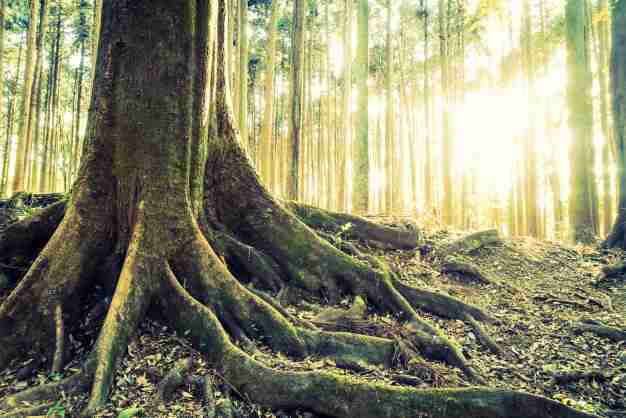The primary cause of tree root decay is poorly drained or overwatered soil, as soggy conditions prevent the tree roots from absorbing all the oxygen and nutrients they require to live. As the roots die and decay, the rot can spread to healthy roots and ultimately result in the death of the tree. To prevent or treat tree root decay, it is important to recognize the different types of root rot.
If you do not identify trees in your landscape suffering from decay, then they may become hazardous to your property. At Timber Works Tree Care, we provide customers with free inspections to determine the risk a decaying tree may pose, and if removal is necessary. We are a licensed tree service that offers tree maintenance, removal, and land clearing to homeowners and businesses throughout the Middleburg, VA area.
Below, we discuss the three basic types of decay that can occur in tree roots:
1. White Rot
The first type of root decay, termed “white rot,” breaks down lignin, the organic polymers key to the formation of cell walls in the bark, and hemicellulose and cellulose, which are responsible for the tree’s tensile strength.
White rot can be broken down into two types. The first type breaks down lignin and cellulose at the same rate. The second type breaks down lignin at a faster rate, which leaves tensile strength preserved. However, it forces the tree to buckle under its own weight, which results in bulging along the trunk.
How else can you recognize white rot? It is fibrous, wet, and spongy. It also gets its name from its white or yellowish appearance, which is due to oxidation and loss of lignin. The exact color and texture will vary depending on the fungi causing the white rot.
2. Brown Rot
Brown rot primarily affects coniferous trees and is caused exclusively by the Fungi Basidiomycota. Unlike white rot, this type leaves the lignin intact and breaks down the hemicellulose and cellulose, resulting in brittle, dark brown wood. The decayed wood dries out, shrinks, and breaks into cubes (it is also called “cubical” brown rot).
Brown rot also poses an increased threat compared to white rot, as there is a dramatic loss of flexibility in the tree, making it much more vulnerable to wind, and hence breakage.
3. Soft Rot
The third type of root decay is soft rot, caused by both fungi and bacteria that break down all wood components – lignin, hemicellulose, and cellulose.
Normally, it only affects broadleaf trees and targets pockets of decayed wood that is softer than the surrounding wood. It is the least severe of the three basic types, as the decay is localized and spreads slowly.
Timber Works Tree Care: Licensed Tree Service in Middleburg, VA
Armed with this information, you are on your way to identifying possible root decay, which will enable you to prevent hazardous trees in your landscape. If you suspect root decay has taken hold in one of your trees, call the professionals at Timber Works Tree Care. As a licensed tree service in the Middleburg, VA area we provide safe, efficient, and affordable tree inspections, and removal services to ensure the safety and health of your landscape. Contact us today to see how we can help and to receive a free estimate!







